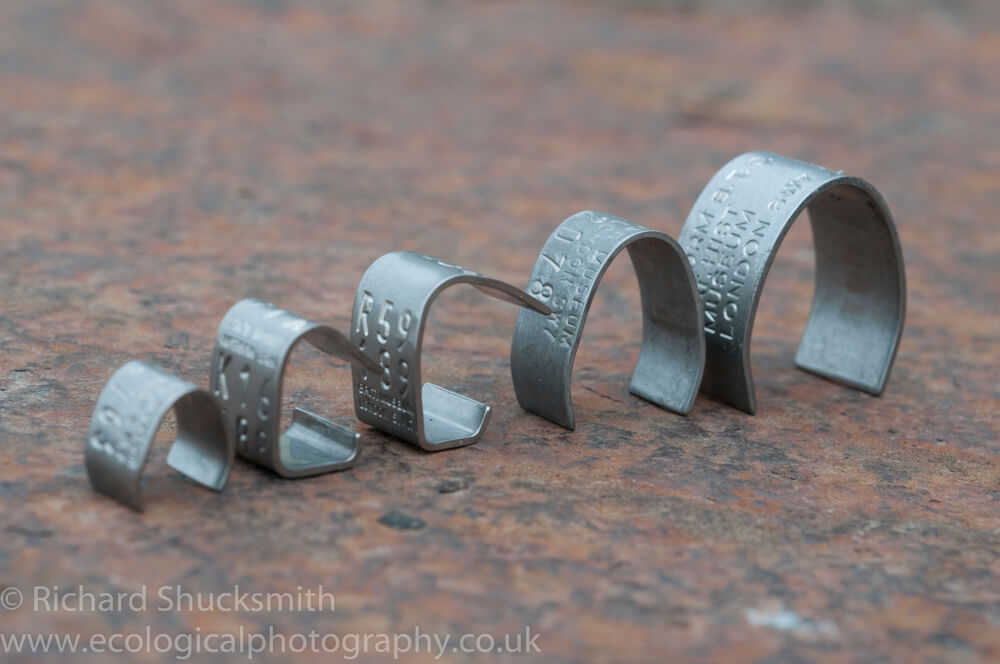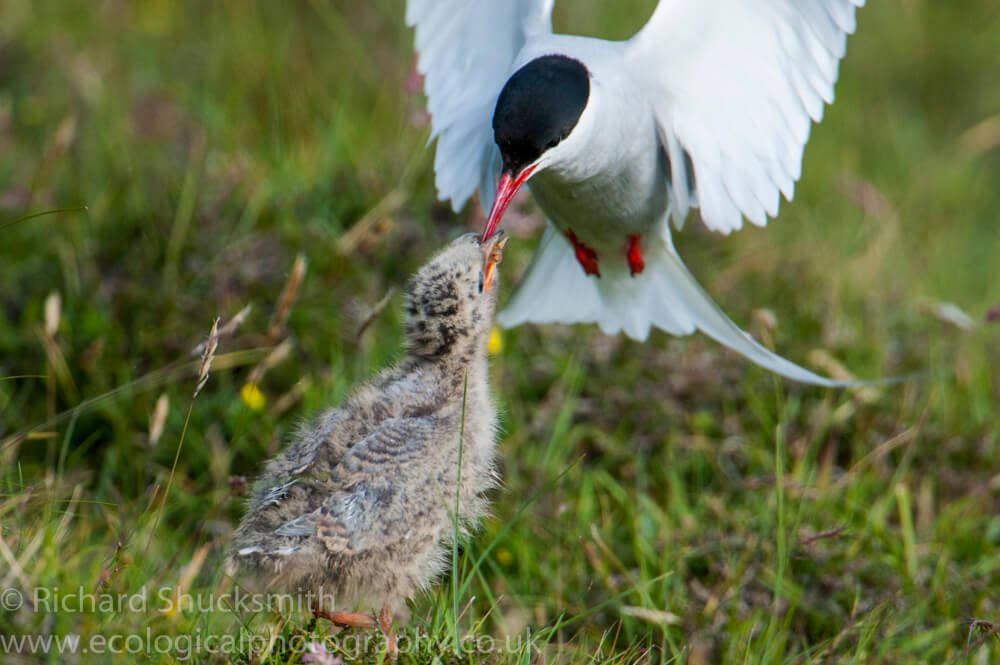This is an article was wrote in 2010 about Fair Isles and the work that is undertaken their on seabirds. Some of the information in this article is out of date today, for example the wardens have changed. However much of what is said in the article still applies today.
FAIR ISLES THE ISLAND OF SEABIRDS
My stomach lurched as the Good Shepherd rolled its way around Sumburgh Head on the southern tip of Shetland. I was on my way to Fair Isle to explore the island’s seabird colonies, but I had a two-hour boat journey ahead of me and it suddenly seemed an awful long way.
Fair Isle is the most southerly island in the Shetland archipelago situated 40 km south of the main island group. It is only 5 km long by 3 km wide and is owned by the National Trust for Scotland. In the height of the seabird-breeding season it provides home to over 250,000 seabirds, made up of 18 different nesting species, making Fair Isle internationally important for breeding seabirds. Fair Isle is probably best known for the Bird Observatory and its work on monitoring bird migration. However, since 1987 the Observatory has been one of four key sites contracted by Joint Nature Conservation Committee (JNCC) to carry out crucial monitoring regarding seabird population levels, productivity, adult survival, chick growth and development and diet. The other key sites are Skomer in south Wales, Isles of May in southeast Scotland and Canna on the west coast of Scotland.
It seemed a long time before the very welcome sight of the Fair Isle cliffs appeared. With the gathering excitement of exploring a ‘new’ island for the first time the rock and rolling of the last two hours was soon forgotten. We entered the harbour where the island people were waiting for the supplies brought over by the Good Shepherd. I was camping just up from the harbour at Buness so I got all my gear and headed off to set up my luxury accommodation for the next week. On my way to the campsite I came across the Fair Isle warden, Deryk Shaw. He has probably ringed more species of rare birds than anyone else in the UK and must be the envy of many birdwatchers and ringers. Deryk and his wife Hollie run the Fair Isle Bird Observatory and they are a wonderful and welcoming couple. Deryk and his two assistant wardens Jack and Simon kindly agreed to take me seabird monitoring, which at the end of June was now in full swing.
Spectacular cliffs surround Fair Isle, creating beautiful coastal scenery where seabirds soar using the rocky ledges to make temporary homes to raise their young. Walking along the cliffs at the north end of the Isle I wondered how the monitoring sites were accessed. I found out the next day as we headed out on a small inflatable boat to a guillemot colony to ring the chicks. I felt incredibly small surrounded by towering rocky cliffs and a nervous excitement was building in me as we came to land on a boulder slope at the base of the cliffs. This exposed shore formed the habitat for the guillemots to lay their eggs and raise their young. As we landed I was immediately struck by the noise, the smell and the guano covered rocks. I followed as Deryk, Simon and Jack systematically made their way across the boulders. Although it was an impressive sight Deryk told me this colony was only a fraction of its size compared to the 1990s. We saw several guillemot chicks hatching but to my horror they were hatching too late. There was no way these were going to survive, let alone fledge. Deryk, Simon and Jack moved through the colony expertly ringing the chicks and in less than hour it was done. With so few chicks it hadn’t taken long. When the population was at its peak it would have taken a whole day to ring all the guillemot chicks at this site.
Guillemots nest in large colonies with up to 30 pairs per metre square, a behavioural tactic used to reduce avian predation by ravens, gulls and skuas. Complex social interactions occur in such dense colonies-they really must like their neighbours! Interestingly the greatest chick raising success is at the highest density of breeding birds and the lowest success is at the lowest density. A reduction in the number of adult birds in the breeding colonies makes the guillemots more prone to predation, further reducing the breeding success of an already depleted breeding population.
I left the guillemot colony with mixed feelings and wondered what it would have been like when populations were at their height. Next we headed off to look at the stacks where the gannets nest. Deryk took the inflatable right through a narrow cave that ran through the centre of the stack. We watched great skuas harassing gannets until they regurgitated their food that was intended for their chicks. Gannets are much bigger than a great skua but the skuas work in teams, with two, three or more skuas targeting a single gannet. They chase the gannet trying to grab hold of the its feathers with their beaks, twisting and turning through the air. This creates a spectacular aerial display that normally ends in the gannet regurgitating the food that was meant for its chick. Although only one of the skuas in the chase gets the meal if they work together they can make a gannet regurgitate the food quicker and harass more gannets throughout the day. Thus overall each skua will get more meals during a day, benefiting all the birds in the group, except the harassed gannet.
It had been a fantastic day to see the seabird colonies up close and to see this stunning island from the sea. But it is not just the cliffs of Fair Isle that play host to important seabird colonies. Tomorrow I was looking forward to helping with the monitoring of the great skua and the more elegant arctic skua that nest on the moorlands around the island.
I met Jack in the morning who was responsible for monitoring the skuas. Both arctic and great skuas are highly territorial and Jack had already marked out all their breeding territories. Today’s task was to check the nests to count the number of chicks. This all sounded very simple as the skuas nest on open moorland, so it was a just a case of following Jack’s map and going to each nest and counting the chicks.
I was looking forward to seeing the great skua up close. They are a big set bird with a wingspan of 1.5 metres. They are also known as ‘bonxie’, a name thought to have come from the Norse word ‘Bunksi’ meaning an untidy old woman. We set off across the moorland and we were soon approaching our first nest. Suddenly I heard the sound of fast moving wings cutting through the air and WHACK, something collided with the back of my head just about knocking me off my feet. I turned to see Jack in fits of laughter as another feathered bomber honed in on my head. These birds looked huge and were coming in at such speed. This pair of bonxies were protecting their nest and did not take too kindly to mine and Jack’s presence. On locating the nest there were no chicks but Jack assured me there were two there last week. A search around the immediate area found both chicks hiding in the heather. Skua chicks of both species, upon reaching a certain size, will move away from the nest. This can be dangerous as they may move into a neighbour’s territory where there is a chance of the chick being eaten by the neighbouring adults. It also makes monitoring difficult because as the chicks become more mobile it can be difficult to distinguish which chicks belong to which pair of adults. It becomes easier when they are large enough to ring but until then careful observations have to be made. Great skua populations are in decline partly due to the reduction of the fishing fleet caused by the decline in fish stocks. Less boats has resulted in less discarded fish which the skuas had partly relied upon for scavenging. As this food source has dwindled great skuas have increased their predation on other seabirds. Research on great skuas has shown that individual skuas specialise on different species of seabirds. For example a great skua may specialise on eating puffins whilst another may specialise in feeding on leach’s petrels. With many seabird species now also in decline some great skuas have had to adapt again, changing their feeding habits from catching small seabird species to harassing gannets for food.
We left the great skuas and headed up Ward Hill to an area where the arctic skuas were nesting. As we neared the nest one of adult birds landed a few metres in front of us. Holding out its wing as if it was broken, making a distress call it moved erratically along the ground acting like it were injured. It was trying to divert us, the perceived predator, away from the nest. Not to be fooled we moved closer to where Jack knew the nest to be and then when we were only a few metres from the chick the high-speed aerial assault started. There was one chick in the nest and an egg just starting to hatch. We moved away and watched the adult bird land next to the nest. This year was looking much better for arctic skuas. In the previous year (2008) there were 37 adult pairs, 17 of which laid eggs but no chicks fledged. Monitoring has shown that the chicks were heavily predated on by the great skuas. When food is scarce arctic skuas will spend more time away from their territory foraging, so are less able to defend their chicks from predation.
Arctic skuas obtain their food through piracy on other birds such as kittewakes and arctic terns, harassing the birds until they drop their food (known as kleptoparasitise). On Fair Isle it seems that the arctic skuas breeding success is closely related to that of the arctic terns. In 2006 there were 800 pairs of arctic terns nesting and 300 chicks fledged. In the same year there were 105 nesting pairs of arctic skuas and 86 chicks fledged. In 2007 there were 208 pairs of arctic terns but only a few eggs hatched and then the whole colony deserted the island. There were 68 pairs of arctic skuas nesting that year but not a single chick fledged. In 2008 no arctic terns nested for the first time since monitoring began on the island and predictably no arctic skuas fledged. This year the arctic terns were nesting in good numbers and at the time of my visit it was looking much better for the arctic skuas. Arctic tern breeding success is closely related to sand eel abundance and so the arctic skuas dependence on the terns links them indirectly to sand eel abundance.
Fair Isle is a magnificent island and spending time there with Deryk, Simon and Jack gave me a great insight into monitoring seabirds. Far too much happened in the two weeks to put down here but it hopefully it conveys how monitoring seabirds can help identify changes in the seas. Seabirds are intrinsically linked to the ocean’s food chains and any changes can have a dire effect on seabird populations. Most notably the availability of sand eels to seabirds seems to have dramatically affected seabird numbers on a nationwide scale. It is also thought that long term increases in sea surface temperatures by about 1oC has altered the zooplankton that larval fish depends upon. This in turn has had a negative effect on the abundance of sand eels. Observations at some seabird colonies have shown that seabirds are catching fewer and smaller sand eels in years of poor breeding success. Although there is no longer a fishery for sand eels in Shetland waters the Shetland Fishermen’s Association has agreed no take zones for sand eels around the major seabird colonies in an effort to help numbers recover and to help protect these important seabird colonies around Shetland.
Not all seabirds are in decline around Scotland. For example, gannet populations are increasing. They have a large foraging area and are not so dependent on sandeels feeding primarily on large fish such as mackerel and herring. Seabirds are good indicators of the state of the seas. Regular monitoring can show changes lower down the food chain which these top predators depend on. However, it does make me wonder when we see these changes in seabird populations is it already too late to act? Are the changes lower down the food chain irreversible?

















